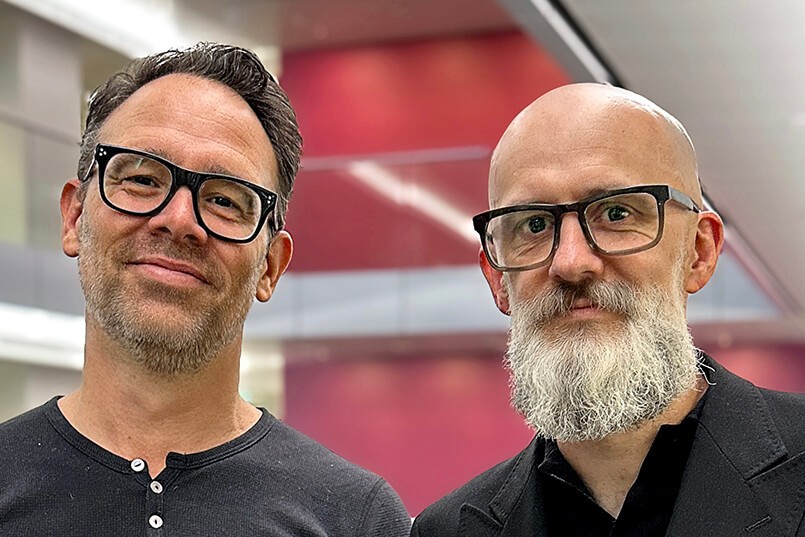Michael Farmer, the Executive Chairman of TrinityP3 USA, recently wrote an excellent article about the challenges facing the agency ‘client heads’ (Client Heads are the Front Line Troops for Agency Transformations – but they need better support from their leaders).
As someone who for many years was centrally involved in client head roles on the agency side with varying degrees of success, the article intrigued me, and not just for the great insights.
It made me think further about the definition of ‘client heads’ and how malleable and misunderstood that definition can be.
There’s more than one approach to being a Client Head
The role of ‘client head’ can be approached, at a broad-brush level, in two ways. The client head can take a predominantly ‘service’ approach, or a predominantly ‘leadership’ approach.
Based on my own experience I agree with Michael’s central premise – that, generally speaking, not enough agencies are putting enough emphasis on partnership strategies, business strategies, or the training of “client heads”. All of which inhibits client heads to take a ‘leadership’ approach.
Furthermore, the executive priorities of the agency C-Suite are calibrated to new business development more than they are to retention and development of existing client relationships.
But what do an agency’s clients want in a ‘client head’? And how does that differ from what the agency itself requires?
It’s Simple…and it’s Complicated
A simple answer came to me today in conversation with a TrinityP3 client. We were talking generally about a change in leadership at the top of her agency team (an agency I had helped place with her via agency tender some five years ago).
I asked her how it was going. Her response was brilliant. ‘The previous person – I felt like I was on speed dial’, she said. ‘I felt like my interests were being pushed within the agency more broadly – but at the same time, she was always ready to challenge me. The new person – he’s great. But I feel like he’s more of a ‘yes person.’
This is a smart summary. It talks to the delicate balance a client head needs to hold between their employer (the agency) and the agency’s employer (the client).
The client, in this case, wanted a client leader. The new person was more geared to client service.
What do agencies actually want?
You’d think that on balance, every agency would prefer a client head to take a leadership approach, rather than a service approach. Isn’t a true leader going to build a richer client relationship over time?
But agencies don’t always want it this way. As a consultant, I have been inside many agencies running assessments, where it is clear that the client account directors/client heads (whatever the title) were primarily focused on ‘keeping the client happy, by serving the agency’s best interests.
Confused much? Well, what it amounts to is an agency culture either actively driving or passively allowing a client service mentality, rather than a client leadership mentality.
Let’s put an example on the table.
How about the media agency with an internal target of securing a level of dollar expenditure within its own trading desk or DSP, rather than anywhere else – or insisting on a share of spend within a particular media publisher in any channel, to honour an agency-wide trading deal.
A client head with a leadership approach, acting in the interest of the client, would possibly suggest a pro-active vendor test to establish best results, before making an agnostic decision about where to place those dollars. She would have an internal conversation to explain the position of the client, and maybe frame a further discussion around ways to achieve broader agency targets across other clients.
This person is acting in the best interest of the agency in that she is providing a truly consultative approach that will help retain the client long term. She’s also acting in the best interest of the client, for obvious reasons.
A client head with a service approach would direct the dollars into the channels required of him by his agency and then, in an attempt to ensure client satisfaction, present great results of the campaign to the client.
The results would not necessarily be ‘fake’ – I’m not suggesting fraud – and the client may be happy. But of course, the question of ‘Could we do even better with a different vendor mix’ is left unanswered by default. Only if the client demanded it would this person run a vendor test.
Here’s another example. How about the advertising agency that wants to increase its scope, revenue and profitability by introducing new services – say, a new consumer research tool.
A client head with a leadership approach would bring this product to the client table and have a balanced discussion about it, before making a recommendation either way based on the response of the client. The client head with a service approach would be trying harder to force-fit the solution in via hard sell or convoluted benefit claims.
Cultural
Agencies, of course, have to make money and they have to retain clients. The expansion of remit within existing clients, or the structuring of deals to ensure the cheapest possible media inventory so that the client pays less, are two legitimate ways of doing this.
But the approach of the client head in delivery has critical implications for how the agency is viewed by its client, longer-term (and particularly if the account is put to pitch).
It follows that the role of the agency, culturally, structurally, in training and development and in general intent, dictates the approach of its client heads.
The agency that literally forbids its client head to even suggest that media vendor test (yes, such agencies do exist), or the agency who simply doesn’t care about anything other than feeding the new business pipeline, is not the agency where the client leadership approach is going to thrive.
At the same time, the willingness of the client to pay properly for the experience required in a true client ‘leader’ is also vital – as is their own culture in welcoming in and working with this person to best effect.
The problem is that none of these building blocks are the norm. There are many consequences, one being a talent hole. There are too few true client leaders in our industry.
The Thin Line between Good and Great
So what, in operational terms, are the differences between ‘client service’ and ‘client leadership’?
What I’m not saying is that ‘one is good, one is bad’. And of course, there are a lot of crossovers.
I’m saying that the nuances between the two approaches can make significant difference over time, when the right person at the right agency is in place.
Here are profiles of two people – let’s call them Joseph and Josephine. Joseph is a client head operating with a client service approach. Josephine is a client head operating with a client leadership approach.
| Joseph: A Client Head with a ‘Client Service’ Approach | Josephine: A Client Head with a ‘Client Leadership’ Approach |
| Proactively manages key client relationships, gaining client trust in ability to deliver successful operations | Builds close, consultative relationships with key stakeholders, gaining client trust in ability to provide thought leadership and advice, both personal and professional |
| Has strong capability to present convincing work to the marketing leaders and team | Has strong capability to present convincing work to multiple client functions, including CEO and CFO, and is called into the boardroom by the client |
| Is focused primarily on day to day and current planning cycle | Is focused on the now, the next and the later – strategically on building into the future |
| Has deep knowledge of the operations of client organisation, competitors and category | Has deep knowledge of the business and commercial objectives, barriers and challenges of client organisation, and the client/s as individual/s |
| Is viewed by the client as a service provider/supplier | Is viewed by the client as not just a service provider, but as business partner/trusted advisor |
| Is reactive to what is being asked in a brief | Works with the client to build out what needs to be done, or has capacity to challenge what is being asked as required |
| Impresses the client with the work | Impresses the client with the work, and influences the client with counsel |
| Is seen as the go-to for anything related to discipline | Is seen as the go-to for anything related to discipline, in addition to a broader role as part of an executive leadership team |
| Internally leads and manages the agency team and the direct output of that team | Internally leads not just the output but the commercial growth of the agency – owns the account P&L and pivots between objective assessment of client needs and understanding of growth opportunities for the agency to build coherent business plans. |
| Manages the expectations of internal agency stakeholders by driving agency targets or preferred outcomes to the client | Manages the expectations of internal agency stakeholders by influencing, guiding and standing ground where necessary to ensure objectivity, whilst considering tailored to client approaches that can deliver both client and agency results in different ways |
| Is aware of what the agency charges in broad terms, and the correct way to apply those charges on the media plans/financial reconciliations | Understands in depth the contract, SOW and associated nuances, and uses the contract as one of the pillars on which to build the relationship and an ongoing business plan. |
Ultimately, Joseph is a good, strong client head. Josephine, on the other hand, is great.
Over time, Joseph will establish trust, and Josephine will become a trusted advisor.
Joseph will work hard to maintain the status quo between agency and client. Josephine will work to shape the agency around the client, to mutual benefit.
Joseph will deliver entirely satisfactory outputs to his client. Josephine has a greater chance of delivering truly value-driving outcomes.
Leadership makes sense for everyone if everyone is willing
The best agency account teams have a client leader at the head, working with other leaders in the agency and the client to set the course, and great client service people delivering on that course, day-to-day.
A client service approach in the top seat will ultimately limit the richness and scope of the agency-client relationship.
Some agencies are brilliant at fostering true client leadership across the board, but I believe they are in the minority. If more developed in this direction, our industry would truly be richer for it.
TrinityP3 help marketers and agencies become great through the work they do together. What major business challenge could we help you solve?




